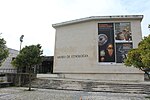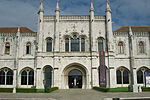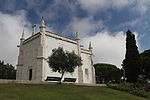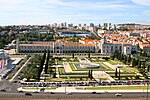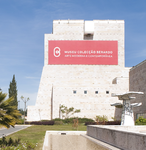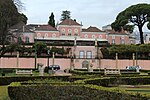Estádio do Restelo

The Estádio do Restelo is a multi-purpose stadium in Lisbon, Portugal. The stadium has a capacity of 19,856 people and was built in 1956, in an old stone quarry. It is situated behind the Jerónimos Monastery in the Lisbon parish of Belém. It is currently used mostly for football matches, by first division club Clube de Futebol Os Belenenses, but also stages musical performances. The Pope John Paul II has also celebrated a mass there attended by more than 100,000 people. The inauguration game was against Sporting CP, and Belenenses won by 2–1. The first international match was against Stade de Reims, 2-0 for Belenenses. Finally, the first game counting for the Portuguese First Division was a Belenenses 5-1 Vitória de Setúbal.
Excerpt from the Wikipedia article Estádio do Restelo (License: CC BY-SA 3.0, Authors, Images).Estádio do Restelo
Avenida da Ilha da Madeira, Lisbon Belém (Belém)
Geographical coordinates (GPS) Address Nearby Places Show on map
Geographical coordinates (GPS)
| Latitude | Longitude |
|---|---|
| N 38.702777777778 ° | E -9.2077777777778 ° |
Address
Pista de Atletismo CF "Os Belenenses"
Avenida da Ilha da Madeira
1400-204 Lisbon, Belém (Belém)
Portugal
Open on Google Maps
